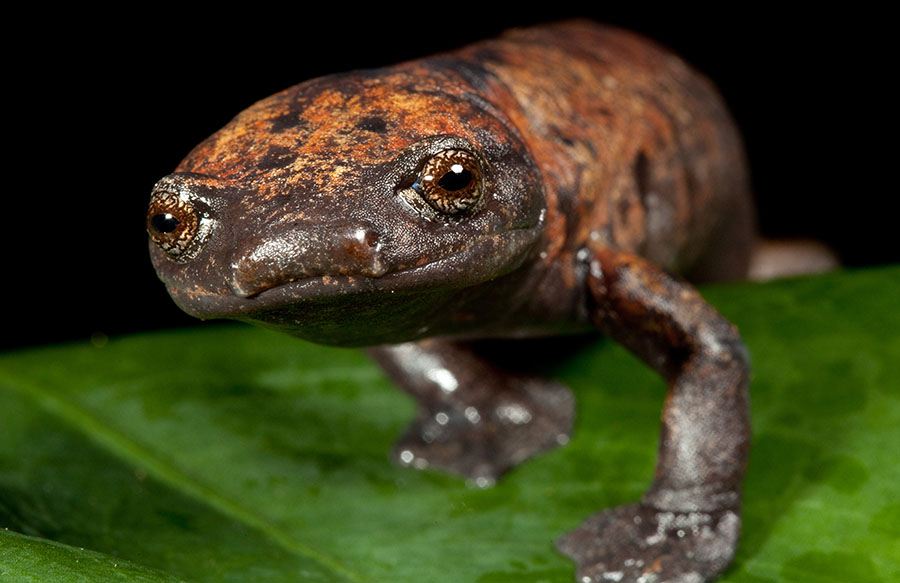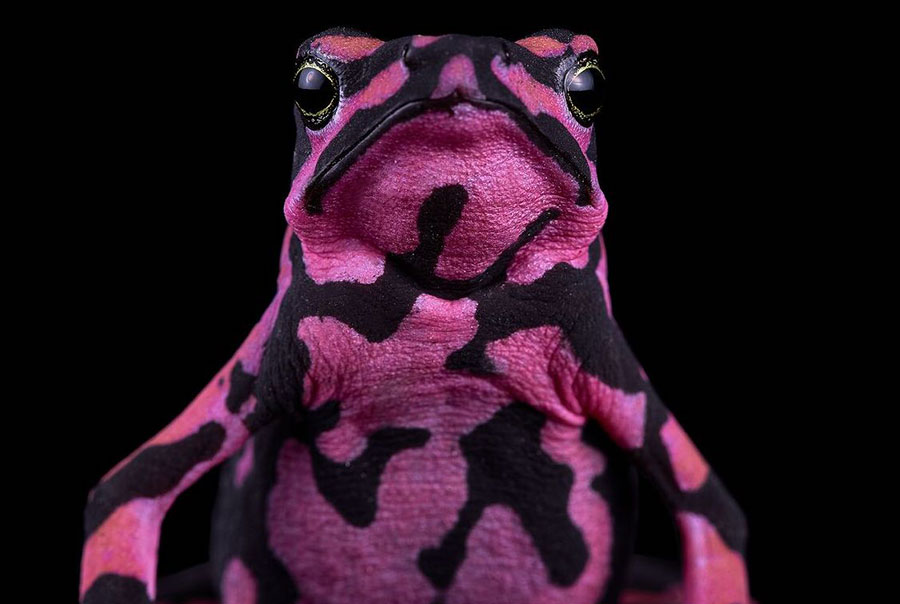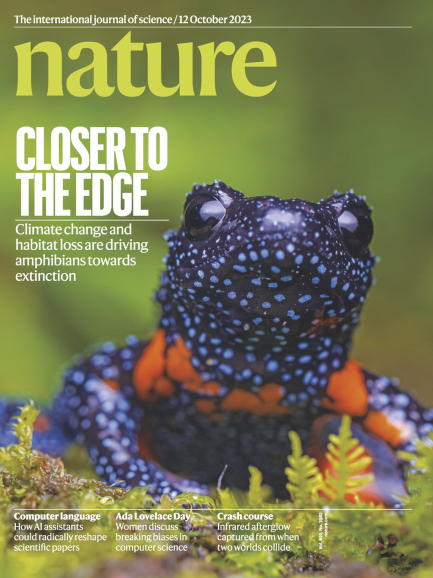CAMARILLO — The world is in danger of losing almost half of its frogs, salamanders and other amphibians with climate change emerging as a greater threat than ever before.
That’s according to a major new study co-authored by CSU Channel Islands (CSUCI) Assistant Professor of Biology Rudi von May and was the cover story for the October issue of the scientific journal, “Nature.” The study, called “Ongoing declines for the world’s amphibians in the face of emerging threats,” contains two decades worth of data from 8,000 amphibian species around the world.

The Giant Palm Salamander, Bolitoglossa dofleini, whose forest home was protected through the creation of a new reserve in the Sierra Caral of Guatemala.
“Scientists were well aware of the other threats to amphibians such as habitat loss and disease, but this study showed climate change emerging as one of the major threats,” von May said. “Between 2004 and 2022, more than 300 species of amphibians have been pushed closer to extinction with climate change as the primary threat to 39% of those species.”
JJ Apodaca, executive director of the nonprofit Amphibian and Reptile Conservancy, told the Washington Post: “It’s a gut punch and an awakening.”
 Von May became involved in the study as a member of the International Union for Conservation of Nature (IUCN) Amphibian Specialist Group, which participated in the Global Amphibian Assessment (GAA), a worldwide comprehensive overview of amphibian extinction risk.
Von May became involved in the study as a member of the International Union for Conservation of Nature (IUCN) Amphibian Specialist Group, which participated in the Global Amphibian Assessment (GAA), a worldwide comprehensive overview of amphibian extinction risk.
This is only the second GAA ever conducted with more than 1,000 experts across the globe contributing their data and expertise, resulting in 2,286 species being evaluated for the first time. Von May was one of 110 scientists who wrote the report as well as the only scientist in California.
“They are like a canary in a coal mine,” von May said. “They are a barometer of the health of the ecosystem. For example, many species of salamander are lungless, and absorb oxygen through their skin. Like other amphibians, their skin is permeable, so if they go down, that means the air and water are getting polluted and that will affect us, too.”
Amphibians are an important part of the ecosystem, transferring nutrients from the water to the land. They, themselves are part of the food chain, so if they disappear, there is a chain reaction up and down the food chain.
“If a number of species go missing, the species that feed on them will also go missing,” von May said. “For example, the larvae of many amphibians eat mosquitoes, and we don’t want to be overloaded with mosquitoes.”
Von May was in charge of coordinating the amphibian assessment from his native Peru. He has gone into the deepest parts of the Amazon to study snakes and amphibians, and they remain a primary research interest for him at CSUCI.
Edging these amphibians back from the brink of extinction will involve doing everything we can to reduce carbon emissions, von May said.
“We need to demand from our politicians that they follow up with their promises of curbing carbon emissions,” he added. “Amphibian researchers like myself need to inform more people of the danger that exists. Also, if we can protect more land from development, it will protect their habitats. Most governments have agreed to curb this extinction by 2050.”
One of the lead authors of the study, Re:wild Species Priorities and Metrics Coordinator Kelsey Neam, explained that the existence of amphibians themselves combats climate change.
“And while our paper focuses on the effects of climate change on amphibians, the reverse is also critically important: that the protection and restoration of amphibians is a solution to the climate crisis because of their key role in keeping carbon-storing ecosystems healthy,” Neam said. “As a global community it is time to invest in the future of amphibians, which is an investment in the future of our planet.”
To read the report, visit the Nature journal online.
CALIFORNIA STATE UNIVERSITY CHANNEL ISLANDS — California State University Channel Islands (CSUCI) is Ventura County’s only public university and opened in 2002 as the 23rd campus in the CSU system serving the regions of Ventura, Santa Barbara, and Los Angeles counties, as well as the entire state. CSUCI is located between Camarillo and the Oxnard Plain, midway between Santa Barbara and Los Angeles and 25 miles north from Malibu.
The campus is nestled against the foothills of the Santa Monica Mountains and is a 10-minute drive from the Pacific Ocean. With more than 5,600 students, 24,500 alumni, and 1,000 employees, CSUCI is poised to grow in size and distinction, while maintaining one of the most student-focused learning environments in public higher education with more than 90 academic degrees, teaching credentials, certificates, and professional and community programs.
Connect with and learn more by visiting www.csuci.edu or CSUCI’s Social Media.
The University encourages persons with disabilities to participate in its programs, events and activities. If you anticipate needing any type of accommodation, or have questions about the physical access provided, please contact the respective area below as soon as possible, but no later than seven (7) business days prior to the event/activity:
CSUCI Students: accommodations@csuci.edu
CSUCI Employee and members of the public: angela.portillo@csuci.edu

